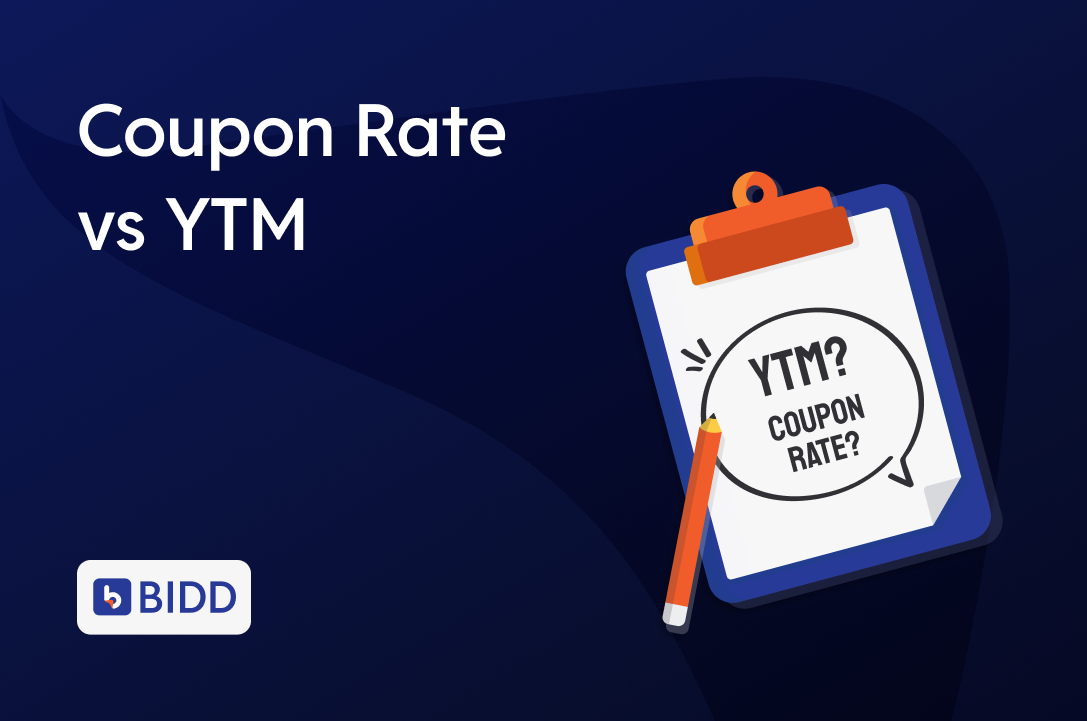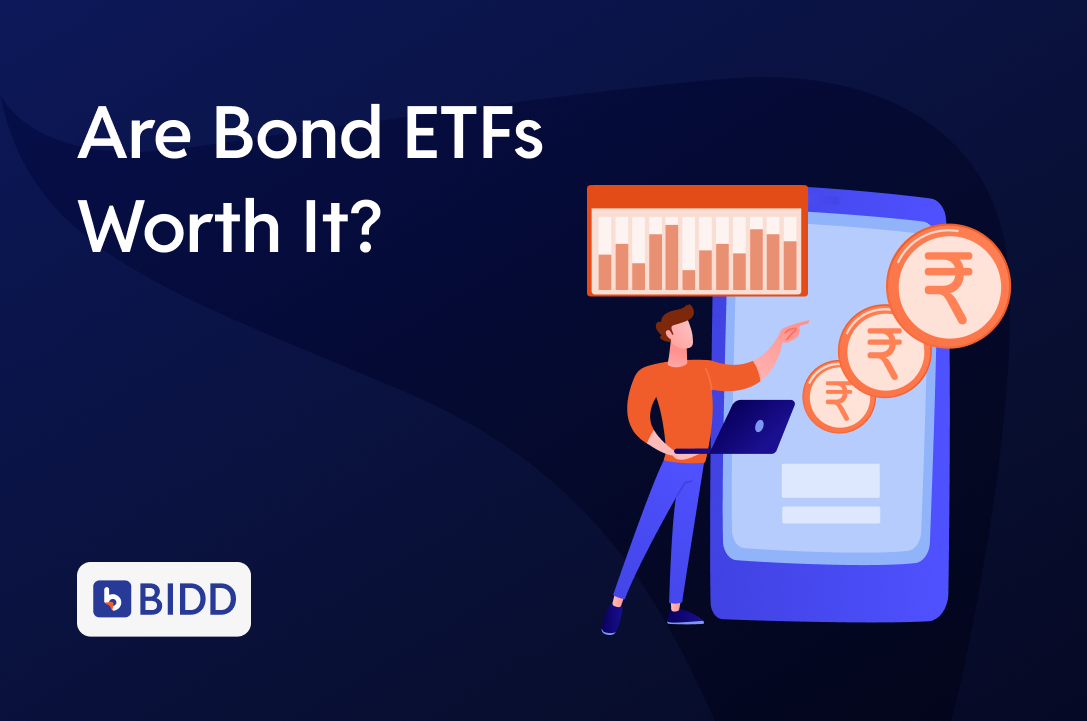How a 12% coupon may give you more. Or less.
A Quick Question to Begin With
If a bond says it offers 12% interest, does that mean you’ll actually earn 12%?
Not always.
This is where many investors get confused — because when it comes to bonds, there’s more than one way to measure returns.
Enter the two key concepts every bond investor should know:
Coupon Rate and YTM (Yield to Maturity).
Let’s break them down — clearly and without the jargon.
What Is the Coupon Rate?
The coupon rate is the fixed interest a bond pays each year on its face value (the amount printed on the bond).
Example:
A ₹1,000 face value bond with a 12% coupon pays ₹120 per year.
This payout remains fixed, regardless of how the bondis trading in the market.
So far, it seems straightforward.
But here’s where things get interesting:
Most bonds don’t trade at face value.
They may be available at a premium (above ₹1,000) or a discount (below ₹1,000).
And when that happens, your actual return changes.
What Is YTM — and Why It Matters
YTM (Yield to Maturity) is your effective return if you buy a bonds at its current market price and hold it till maturity.
It takes into account:
- The bond’spurchase price (premium or discount)
- The coupon payments you’ll receive
- The time remaining until maturity
- The gain or loss on maturity (if you paid more or less than face value)
Think of YTM as the return after adjusting for reality, not just what’s promised on paper.
Let’s Look at Two Scenarios
Bond A: Bought at a Discount
- Face Value: ₹1,000
- Coupon: 12%
- Market Price: ₹900
Even though the bond still pays ₹120/year, you’re investing only ₹900.
So you earn interest + ₹100 gain at maturity.
YTM: Higher than 12%
Bond B: Bought at a Premium
- Face Value: ₹1,000
- Coupon: 12%
- Market Price: ₹1,100
You’re still receiving ₹120/year, but you paid ₹1,100.
At maturity, you’ll only get ₹1,000 back — a ₹100 loss.
YTM: Lower than 12%
Why You Should Care
Because the coupon rate alone doesn’t reflect your actual earnings.
You could be earning more — or less — than what the headline number suggests.
This is why informed investors always review the YTM before investing.
YTM helps you:
- Make fair comparisons across different bonds
- Know your true return after purchase
- Avoid overpaying for a bond with a seemingly attractive coupon
Coupon Rate vs. YTM: A Quick Comparison
| Feature | Coupon Rate | YTM (Yield to Maturity) |
| What is it? | Fixed interest on face value | Actual return if held till maturity |
| Changes with market price? | No | Yes |
| Usefulness | Tells you annual interest income | Tells you total return over the bond’s life |
| Think of it as | Salary on paper | Salary in hand |
Looking to understand credit ratings better?
Head over to our detailed blog on The ABC of Credit Ratings and get all the insights you need.
Common Misconceptions — Clarified
“12% coupon means I’ll earn 12%.”
Not necessarily. That’s true only if you buy the bond at face value.
“A higher coupon is always better.”
Only if you’re not overpaying. The effective return (YTM) may still be low.
“YTM is too complex.”
Not at all. It’s just a smarter, more complete way of understanding what you actually earn.
Final Thoughts
Big numbers can be misleading — especially in the world of fixed-income investments.
So when evaluating bonds, don’t stop at the coupon rate.
Always ask: “What’s the YTM?”
And with digital investment platforms like Bidd, you don’t have to run complex calculations.
You can compare coupon rates and YTMs side by side — helping you make informed, risk-adjusted choices with confidence.
Because in bonds, it’s not just about what you’re promised —
It’s about what you actually receive.
Disclaimer: This blog is intended solely for educational and informational purposes. It should not be construed as investment advice, a recommendation, or an offer to buy or sell any financial products. Please consult a registered financial advisor before making any investment decisions.




